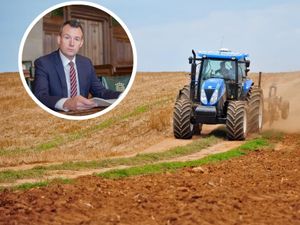Drought-stressed maize is more likely to present mycotoxin risk
The extremely hot weather this summer has meant many maize forage crops have grown under drought stressed conditions, which has increased the likelihood of in-field mycotoxins developing.
I urge dairy farmers to be aware of this heightened mycotoxin risk when feeding maize forage this autumn and winter.
With potentially limited forage stocks following a difficult growing season, farmers are going to need to maximise feed utilisation and digestion to ensure performance isn’t impacted too greatly this winter.
In-field mycotoxins are more likely to be present in silages if the crop experienced any kind of stress, such as growing in drought conditions, because moulds and fungi will have had more opportunity to take hold and produce mycotoxins.
I recommend farmers consider the impact of extreme weather during the growing season on their maize crops. If a maize plant was under stress while it was tasseling, that will have added to the risk of in-field mycotoxins developing.
Unfortunately, there’s no way to overcome the fact that stressful growing conditions increase the likelihood of moulds and fungi moving in and producing mycotoxins, which then remain present in the forage once it’s in the clamp.
Feeding mycotoxins to cows can trigger a vast range of issues, including loose muck, poor fertility, swollen hocks, elevated cell counts, impaired rumen function and anything from a 0.5 to two-litre reduction in milk production per cow per day.
Essentially, any unexplained signs of poor health or performance can potentially be caused by presence of mycotoxins in forage.
If you’re aware there’s a risk of mycotoxin contamination, but have to feed the forage due to limited stocks, the best option is to add a mycotoxin binder to prevent the negative impacts on your herd.
Because there are over 400 potential types of mycotoxins which can cause health issues in dairy cows, I recommend using a broad-spectrum mycotoxin binder. This will bind most mycotoxins before they are absorbed by the cow, allowing them to pass out in the muck without causing harm.
There are some mycotoxins which can’t be irreversibly bound, so need to be transformed or degraded to prevent them from causing damage.
Restore5+ contains yeast extracts which trigger these bio-transformations, enabling key mycotoxins to be bound and excreted. It can also prevent oxidative stress, restore liver function and stimulate an immune response, improving cows’ resilience to disease challenges overall.
To incorporate a mycotoxin binder into the ration costs approximately 10 pence per cow per day and if you're feeding a high-risk forage crop, it definitely makes sense from a financial perspective. Especially when you consider the cost of problems which can result from lack of action, such as abortions, retained cleansings, lower heat detection, and reduced milk yields.
Beth Parry is a dairy specialist at Wynnstay





